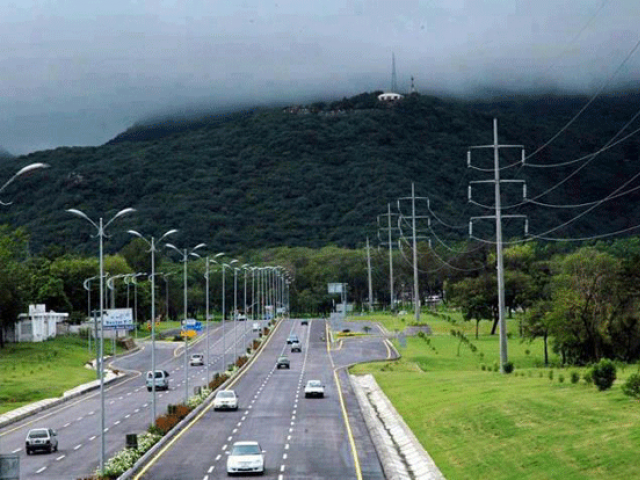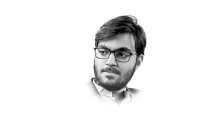Reimagining Islamabad: the knowledge capital
There are a number of things that authorities need to do to make Islamabad a knowledge city

Islamabad. PHOTO: EXPRESS
A knowledge city may be considered as an urban centre that fosters and facilitates creation, dissemination, expansion and application of knowledge. Such cities help the country towards value addition in the export basket and propel the creation of a conducive environment for scholars and knowledge workers who aim at resolving economic, social and technological challenges. There are a number of things that authorities need to do to make Islamabad a knowledge city.
First, the private sector should be allowed to construct hostels to accommodate over 50,000 students in the city. Similarly, studio and other apartments should be allowed in all sectors of Islamabad to accommodate around 100,000 knowledge workers in this city. Moreover, hotels and guest houses should be incentivised to expand to accommodate the growing need for short-term visitors. The F-6, G-6 and G-7 sectors of Islamabad have underutilised housing units. Most of them are in a dilapidated condition. Urban regeneration should be carried to develop these sectors as high-rise housing, hotels, commercial spaces, studio apartments and technology zones. The huge land occupied by the Islamabad Club should be converted into a technology park and the club may be moved closer to the new airport.
Second, there are large tracts of land within the centre of the city that are either lying vacant or being utilised sub-optimally. The Capital Development Authority (CDA) and the Ministry of Science and Technology especially, have so many vacant and underused buildings which may be converted into technology and knowledge zones. These zones are recommended to be run through private sector partnerships, providing co-working spaces for startups, freelancers and technology and other creative companies. It may also be pertinent to highlight that the presence of knowledge workers also creates multiple jobs in non-tradable sectors for low-skilled labour force.
Third, Islamabad should develop a museum of the Indus Valley civilisation and the history of the Sub-continent in the city centre. This should be developed on the model of the Smithsonian Museums in Washington DC. Such a museum can create a lot of opportunities for learning, research and tourism in the city.
Fourth, the federal government should plan to invite at least three foreign universities (specialised in science and technology) to open campuses in Islamabad. The government should provide plots to build high rise buildings for the universities in the city centre. There should be open competition and each foreign university should collaborate with a local university to bid for opening a campus. They should share their plans for investment and expansion. The policymakers may study ideas shared in the book, The Map of Knowledge by Violet Moller, to understand how cities have been making deliberate efforts to attract scholars from across the world since the Greek civilisation. The knowledge shifted from one city to another where it found more respect, tolerance and prospects of addition into a body of knowledge. Hence, deliberate and well-thought efforts are required to attract scholars and knowledge workers to the cities.
Fifth, the National Library situated next to the Prime Minister’s Office should be relocated to the Blue Area or G-8 sector. A functional library should be established in each sector of Islamabad along with a community centre. These libraries should provide free Wi-Fi and there should be dedicated spaces for women, the elderly population, and children for their social, educational and recreational activities.
Sixth, the city should be made more pedestrian and bicycle-friendly. The cars entering into the city centre should be charged a toll and a parking fee. The mixed use, density, walkability and congestion pricing will reduce the presence of cars. An increase in the land-use by commercial/business activities will increase revenues of the city manifold. The revenues from such initiatives can be diverted towards services such as drinking water, garbage collection and policing.
Lastly, the Pakistan Institute of Development Economics (PIDE) may be transformed into a National Academy of Social Sciences. The challenges that the country is facing are complex and require an interdisciplinary response instead of relying on simplistic and colonial origin of the discipline of development economics.
The efforts towards reimagining Islamabad as a knowledge city should be aimed at resolving Pakistan’s economic, social and technological challenges in the 21st century. By reimagining Islamabad as proposed above, the city can become a role model for other cities in Pakistan to create more jobs, prosperity, creative economy, urban tourism and communal living.
Published in The Express Tribune, March 3rd, 2020.
Like Opinion & Editorial on Facebook, follow @ETOpEd on Twitter to receive all updates on all our daily pieces.
















COMMENTS
Comments are moderated and generally will be posted if they are on-topic and not abusive.
For more information, please see our Comments FAQ